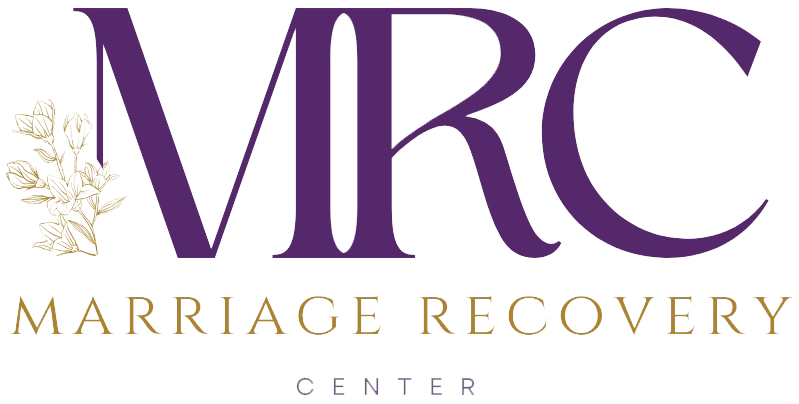Bad behavior is often a product of personal choices, not something you cause. However, you might be unknowingly enabling that bad behavior through your reactions and actions. Whether it’s with a narcissistic partner, a controlling boss, or a manipulative friend, certain patterns of interaction can facilitate their harmful actions. So let’s explore five key ways you might enable bad behavior and provide actionable steps to stop it.
1. Getting Hooked Into Arguments
One of the most common ways we enable bad behavior is by getting drawn into arguments. You’ve probably experienced it before: a heated conversation you didn’t want to have, but somehow, you find yourself deeply engaged, emotionally charged, and agitated. This situation can feel like emotional quicksand.
Emotional quicksand refers to situations where you are sucked into an argument or confrontation, even though you’d rather avoid it. The other person may be adept at pushing your buttons, provoking reactions, or baiting you into conflict. While their behavior is manipulative, your reaction—getting hooked—gives them power and validates their actions.
How to Stop It: Recognize the emotional triggers that lead you into these arguments. When you feel yourself being pulled in, take a step back. Ask yourself if this is a conversation worth having or if it’s simply a trap to keep you emotionally engaged. Develop a strategy to remain calm and disengaged from non-productive conflicts.
2. Giving In to Keep the Peace
Another way we unknowingly enable bad behavior is by giving in just to keep the peace. It’s a natural human desire to avoid conflict, especially if you’re dealing with someone whose behavior is overwhelming or aggressive. You might think that if you just give them what they want, things will go back to normal, and you’ll have peace—at least temporarily.
However, this is a short-term solution with long-term consequences. By continually giving in, you’re reinforcing their bad behavior. They learn that if they push hard enough, you’ll eventually concede, and their actions will go unchecked.
How to Stop It: Understand that peace at the expense of your well-being is not real peace. Set boundaries and stick to them. You don’t have to be confrontational, but you do need to stand firm. Let the person know that while you value peace, it cannot come at the cost of enabling behavior that is harmful or manipulative.
3. Making Yourself Small to Avoid Conflict
When you find yourself in a relationship with someone who dominates conversations or constantly asserts their superiority, you might shrink yourself to avoid further conflict. You become smaller and smaller, trying not to draw attention or stir up the waters. This is often a response to exhaustion—it’s easier to let them have their way than to fight every battle. But in doing so, you’re empowering the other person to take up all the space, emotionally and mentally.
This behavior is particularly common in relationships with narcissists or controlling individuals. They thrive on making others feel less than or inferior, and by making yourself small, you give them the validation they crave. Over time, this dynamic erodes your confidence and sense of self.
How to Stop It: Resist the urge to disappear. Remember that your voice, opinions, and needs are just as important as anyone else’s. Instead of retreating, practice asserting yourself in a calm, measured way. Even small steps toward reclaiming your space can have a significant impact on the balance of power in the relationship.
4. Protecting Their Reputation
In many relationships, especially those involving emotional abuse or manipulation, you might find yourself protecting the other person’s reputation. You cover up their bad behavior, make excuses for them, or even lie to others to keep them in a positive light. This might seem like an act of loyalty or love, but in reality, it prevents the person from facing the consequences of their actions.
By protecting their reputation, you’re enabling their bad behavior to continue unchecked. They don’t have to take responsibility for their actions because you’re shielding them from the consequences.
How to Stop It: Stop covering for them. Allow their actions to speak for themselves, and let them experience the natural consequences of their behavior. This doesn’t mean you have to go out of your way to expose them, but it does mean you stop pretending or lying to make them look better. Honesty is key in breaking the cycle of enabling.
5. Taking On the Consequences of Their Actions
Finally, one of the most damaging ways we enable bad behavior is by taking on the consequences of another person’s actions. This often happens when you feel a sense of responsibility for the other person, whether it’s a partner, family member, or colleague. You might step in to fix their mistakes, prevent them from facing failure, or shield them from emotional fallout.
While this might seem like an act of kindness, it’s actually preventing the person from learning from their mistakes. They never have to change their behavior because you’re always there to soften the blow. Over time, this can create a toxic dynamic where you’re constantly picking up the pieces, while they continue to act irresponsibly.
How to Stop It: Let them experience the natural consequences of their actions. If they make a mistake, allow them to deal with the repercussions. This might be difficult, especially if you care about the person, but it’s necessary for their growth. By stepping back, you’re giving them the opportunity to learn and change their behavior.
Conclusion: How to Respond to Bad Behavior Without Enabling It
Breaking the cycle of enabling bad behavior requires awareness and deliberate action. Here are five key takeaways to remember:
- Be mindful of emotional quicksand: Don’t get drawn into arguments or confrontations that you don’t want to have. Stay calm and disengaged when necessary.
- Don’t give in just to keep the peace: Short-term peace often leads to long-term problems. Stand firm and assert your boundaries.
- Stop shrinking yourself: You don’t need to make yourself small to avoid conflict. Your presence and opinions matter—don’t let someone else take up all the space.
- Stop protecting their reputation: Let the person face the consequences of their actions instead of covering up for them.
- Let them deal with their own consequences: Don’t take on the burden of fixing their mistakes. They need to learn from their own behavior.
By addressing these five areas, you can stop enabling bad behavior and encourage healthier, more balanced relationships. Remember, you are not responsible for someone else’s actions, but you do have the power to change how you respond to them.
To learn how we can help, reach out to us at (206) 219-0145 or info@marriagerecoverycenter.com to speak with a Client Care Specialist
Also read: Save Your Marriage: Two Aspects of Marriage Recovery
About Dr. Hawkins:
The internet is inundated with hyperbole and misinformation about narcissism, leaving many people confused and hopeless. Get the facts on narcissism and emotional abuse from someone who has been researching, writing about and treating narcissism and emotional abuse for over a decade.
Dr. Hawkins is a best-selling author and clinical psychologist with over three decades of experience helping people break unhealthy patterns and build healthier relationships.
He is the founder and director of the Marriage Recovery Center and the Emotional Abuse Institute which offers education, training and counseling for people who want to break free of, and heal from, emotional abuse. Whether the perpetrator of the abuse is your spouse, partner, parent, boss, friend or family member, we offer practical advice for anyone trapped in a toxic, destructive relationship.
In addition to narcissism & emotional abuse, you’ll learn about the lesser known forms of abuse, including covert abuse, reactive abuse, spiritual abuse, secondary abuse, relationship trauma and much more.







